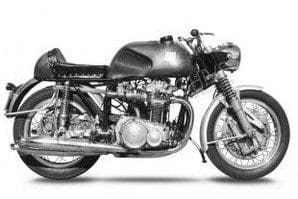
Motosacoche 1901-1956 Switzerland
An Acacias, Geneva-based company who built complete motorcycles and later supplied proprietary engines. Founded c1899 by Swiss brothers Henri and Arman Dufaux, who took out patents in 1901 for a super attachment for motorising pedal cycles. Comprising the 211cc engine, carburettor, electrics and fuel/oil tank encased in shaped metal sidepanels which protected the rider’s clothing and channelled cooling air onto the cylinder, all this was housed in a triangular tubular sub frame. The neat attachment, called ‘Une moto sa coche’ (a motor in a bag), not only sold in quantity and could be fitted to the frame of a gents’ cycle within moments, but gave the company its brand name.
Like Moto-Reve, Motosacoche built quality machines and engines, but followed their own ideas of design which often bucked the trend. Valve operation of the launch model ‘motor in a bag’ was one such example. Although the automatic inlet valve followed conventional design the mechanically operated exhaust valve wasn’t operated by a conventional camshaft but by eccentric grooves machined into an internal flywheel face. The grooves were followed by a bell cranked lever which controlled exhaust valve opening.
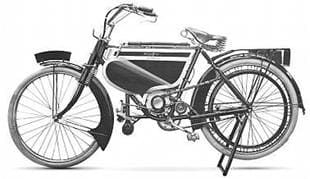 In 1903, exports to Britain began when the Dufaux brothers established their own importer/outlet at 65 Holborn Viaduct, London called H & A Dufaux (England) Ltd to market their cycle attachments. Soon the British base began building completed machines, sometimes using Royal Enfield cycle fittings. The Geneva factory then started building complete machines and expanded the range to include V-twin motorcycles in addition to the cycle-based machines.
In 1903, exports to Britain began when the Dufaux brothers established their own importer/outlet at 65 Holborn Viaduct, London called H & A Dufaux (England) Ltd to market their cycle attachments. Soon the British base began building completed machines, sometimes using Royal Enfield cycle fittings. The Geneva factory then started building complete machines and expanded the range to include V-twin motorcycles in addition to the cycle-based machines.
By 1908, Motosacoche was offering Bosch magneto ignition across the range, the drive of which for some models was again taken from one of the flywheels, this time by a worm cut into the periphery.
In addition to enlarging the cycle attachment engine to 254cc and expanding their own V-twin range, Motosacoche were forming a close liaison with Royal Enfield, links probably assisted by the transfer of the colourful Australian draughtsman Osborne de Lissa as manager to the Dufaux London base. Future crack motorcycle competitors Bert Le Vack and Jack Holroyd enjoyed their first ‘works’ competition successes riding for Motosacoche.
A 1911 single cylinder Motosacoche, using the engine from the ‘Une moto sa coche’ type Over the next few years, similar 344/496/750cc V-twins were built under both the Motosacoche and Royal Enfield names. While Motosacoche built the engines and Royal Enfield shipped frames out to Geneva, both models employed Royal Enfield, two-speed gears, front forks and Royal Enfields patented pedal engine start system. In 1913, Motosacoche set up another company, MAG
(Motosacoche, Acacias, Geneva), to supply proprietary engines to other makers, of which Matchless were one of their first customers.
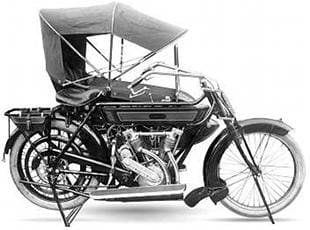 After WWI, Motosacoche continued to supply quality motorcycles, often with inlet over side exhaust valve engines, to continental customers, but trading restrictions made them un-competitively priced on the UK market. Despite this, the supply of MAG engines continued for some years to makers including Brough Superior, Ariel, Matchless, New Henley, Morgan in the early Twenties and P & P in the late Twenties. Continental customers included German makers Triumph, Imperial, Neander, Hecker and Bucker, rival Swiss motorcycle builders Condor and Allegro, the Austrian DSH and the French Monet-Goyon concern.
After WWI, Motosacoche continued to supply quality motorcycles, often with inlet over side exhaust valve engines, to continental customers, but trading restrictions made them un-competitively priced on the UK market. Despite this, the supply of MAG engines continued for some years to makers including Brough Superior, Ariel, Matchless, New Henley, Morgan in the early Twenties and P & P in the late Twenties. Continental customers included German makers Triumph, Imperial, Neander, Hecker and Bucker, rival Swiss motorcycle builders Condor and Allegro, the Austrian DSH and the French Monet-Goyon concern.
Continuing their UK links, former Brooklands racers Bert Le Vack and Dougal Marchant were involved in the design and development of the quick, durable 250, 350 and 500cc ohc Motosacoche racing singles. Supply of these engines was restricted to their own works team and selected customers both private and factory including Monet Goyon. On 350 and 500cc models Wal Handley won his classes at the 1928 Grand Prix de Europe, one of Motosacoche’s first road racing success as the earlier 497/748cc ohc V-twins had proved far better hill climbers than road racers.
In 1931 Motosacoche offered privateers an ‘over the counter racer’ the 498cc ohv D50, available either as a complete machine or engine only. Roadster production in the Thirties centred around 347/497cc side-valve and ohv singles and an attractive 846cc side-valve touring V-twin, the last machine designed by Bert Le Vack before he died in a motorcycle accident.
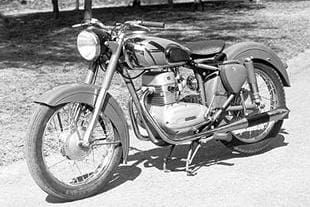 Development of new machines stagnated in the late Thirties. After WWII, production focused on a well built shaft drive ohv 248cc single and, to a lesser extent, a 246cc ohc parallel twin with a Richard Kurchen designed Opti motor. sadly, the futuristic open framed 235cc side-valve single, designed by Douglas Marchant, never went into volume production.
Development of new machines stagnated in the late Thirties. After WWII, production focused on a well built shaft drive ohv 248cc single and, to a lesser extent, a 246cc ohc parallel twin with a Richard Kurchen designed Opti motor. sadly, the futuristic open framed 235cc side-valve single, designed by Douglas Marchant, never went into volume production.
Motosacoche are sought-after, desirable, usable motorcycles and although survival rates are fair both on the Continent and here in the UK ownership is at a premium.
Moto-Scoot 1936 – c1950 USA
A range of Lauson and Briggs & Stratton powered tiny scooters designed and built by former American dirt track racer Norman Siegal in Chicago. From just 186 scooters made in 1936 Siegal built 2700 in 1937 and 4500 the following year. Although some were marketed as the Moto-Scoot others were re-badged for the Mead Cycle Company, also of Chicago. During WWII, Norman Siegal worked for the American war effort. After the war Siegal redesigned his Moto-Scoot, again using pull start, fan-cooled Lauson proprietary engines. Survivors are rare and highly prized in the USA amongst historic scooter fans.
Mototrans 1957-82 Spain
After WWII the Franco regime in Spain banned the import of motorcycles, leading to the founding of the Mototrans factory at Barcelona for the assembly and building of Ducatis. By the mid-Sixties, Mototrans began introducing their own designs including two racers. Bruno Spaggiari and Giuseppe Mandolini won the 1964 Barcelona 24hours on the 285cc single and the MT250, a 250cc four, was designed by former Benelli engineer Renato Armaroli.
Later roadsters included the 125/160cc singles and the famous (infamous) 24 Horas which some wags changed to 24 horrors. In fact the over-square 247cc bevel drive ohc single was a pretty hot machine, but the cams in some models were soft, leading to rapid wear.
As well as introducing a range of small two-stroke singles including the Pronto and Senda, Mototrans continued with the Ducati theme of singles almost until the end of production. Later models included the 300cc Electronica, 350cc Forza (touring) and 350cc Vento (sport). In 1978 Mototrans unveiled their last major new model, the MTV 407cc Yak, which looked more like a Japanese single than a Ducati. Production stopped briefly in 1981 then limped on until 1983. Spares supply is variable but many Mototrans are well worth a second look as, with some mechanical attention, they offer Ducati single performance yet are a bit different.
MT 1925-37 Austria
Austrian marque designed by Count Matthais Thun using predominately British proprietary parts, including Villiers two-stroke engines, JAP side-valve and ohv single and V-twin units in his roadsters. MT usually relied on Blackburne and Swiss MAG power for their racers. Although examples survive, they’re rarely offered for sale.
Muller 1950-c1977 Italy
Marque designed and built by German resident in Italy using NSU engines then later Sachs, Hiro and Morini units, as NSU withdrew from the motorcycle world in the Sixties. Production began with roadsters then later Muller focused on the off-road market.
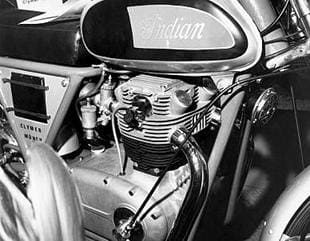 Munch 1966-
Munch 1966-
The concept of installing car engines into motorcycle chassis has been favoured by some individuals and small factories since the pioneer days. The power characteristics of smooth, lusty multi-cylinder car engines are desirable. But, with memories of VW Beetle engines shoe-horned into shaft-drive Sunbeam frames, or huge American V-blocks powering heavily-stretched chassis, we can only wonder their creators dared take them out before nightfall. Freidel Munch is an exception. While his Mammut motorcycles are overweight and tall, they are powerful, functional motorcycles which, although not pretty, are handsome.
A gifted engineer who ran a small motorcycle dealership, Munch had been involved with Horex racers and the URS four-cylinder race engine project which powered its designer, Helmut Fath, to the 1968 Sidecar World title and Horst Owesle in 1971. Using many obsolete Horex parts, Munch built the first Mammut as a one-off for Parisian motorcycle dealer/racer Jean Murit. By 1966 the concept was attracting interest and Freidel went into production.
Using four-cylinder ohc NSU car engines, Munch began with a 996cc version, then an 88bhp 1177cc unit with the option of a 100bhp, 1278cc unit which was upped to 104bhp when fuel injected. As remaining supplies of Horex parts dried up, Marzocchi front forks, Brembo brakes and other proprietary items were supplemented. When the supply of NSU car engines ran out, Munch switched to VW or Audi power.
By the mid-Eighties production had all but petered out although odd examples were still built. In 2000 Munch launched a totally new model, the Mammut 2000, with a turbo-charged 1998cc Audi engine and much carbon fibre bodywork. Although only small numbers have been built, a full-length film has been produced with the Mammut 2000 its star. The Munch Mammut has become a cult motorcycle, never cheap and today seldom advertised, ownership passing among enthusiasts.
Mustang 1945-65 and 1971-72 USA
Almost unknown in Europe but a serious collector’s item and ‘must-have’ for many American enthusiasts. Rather like the BSA Bantam here in the UK which rightly attracts the sentimental vote among enthusiasts, so does the Mustang in the USA by ‘senior teenagers’ who rode them to school, part-time jobs and on paper rounds decades ago. The answer to ‘is it a scooter or motorcycle?’ depends on your leanings.
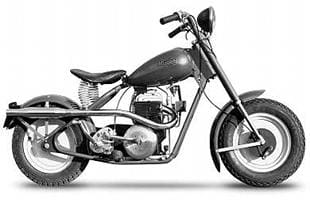 During the early-Thirties a young, capable, south Californian engineer called Howard Forrest raced almost anything with an engine; his great love being midget sprint cars, some of which he built himself. From the midget car, Forrest developed a passion for tiny wheels leading him to design all his future Mustangs with either eight or 12in wheels.
During the early-Thirties a young, capable, south Californian engineer called Howard Forrest raced almost anything with an engine; his great love being midget sprint cars, some of which he built himself. From the midget car, Forrest developed a passion for tiny wheels leading him to design all his future Mustangs with either eight or 12in wheels.
Forrest’s own midget car was powered by an Ace four-cylinder motorcycle engine with home-brewed watercooling conversion. Developing an interest in motorcycles, Howard bought an Indian twin, then a Salisbury Motor Glide which he liked, but he wasn’t impressed by its lack of power. Ever inventive, he built from scratch his own in-line four-cylinder engine loosely based on an ohc Offenhauser design for a midget car, then c1941 installed it in his own motorcycle chassis with small wheels.
As an engineer for Gladden Products, 635 West Colerado Boulevard, Glenvale, California – makers of light aircraft parts – Forrest regularly commuted to work on his creation, which attracted the attention of his boss, John N Gladden. An astute businessman, Gladden recognised there was a market for motor scooters as a cheap second vehicle for families, a teenager’s first machine or basic transport for the cash-strapped. Needing work for his factory as WWII ended, Gladden established a motorcycle development shop with Howard Forrest and another of his capable engineers, Chuck Gardner, in 1944.
Within a year Forrest and Gardner had five different prototypes up and running with 12in wheels and Villiers engines. Settling for a design with rigid rear chassis, short leading link front fork with springs mounted on the fork’s outer side and an Amal carburettor, Gladden ordered his first 100 197cc engines from Villiers in late 1945, only to be disappointed. The bomb-damaged Wolverhampton, factory could only supply 122cc units. Using a scaled-down chassis, production started, the model named the Mustang Colt (Mustang after the P-51 Mustang fighter for which Gladden supplied parts and Colt as this was the beginning of a bigger plan).
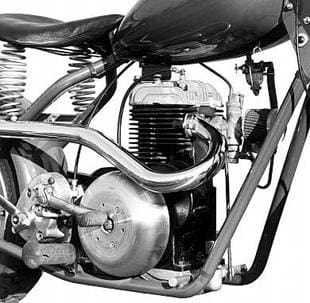 Approximately 235 Colts were built during 1945-47 before the Model 2 was launched. Howard Forrest disliked two-stroke engines and the 122cc 9D especially for its hand change gear lever describing it, as did some other Americans, as a ‘suicide lever’. Around 1946 Gladden bought Kinner Motors Co who had built a five-cylinder radial aircraft engine and the robust 317.6cc side-valve Bumble Bee industrial engine, intended for aircraft generator units. With modifications the Bumble Bee was installed into an altered Mustang frame with telescopic front fork, Amal carburettor, Burman footchange gearbox and belt-driven Wico generator. Forrest was happier with this concept, which seemed much more American than the Villiers-engined model. Sales rocketed.
Approximately 235 Colts were built during 1945-47 before the Model 2 was launched. Howard Forrest disliked two-stroke engines and the 122cc 9D especially for its hand change gear lever describing it, as did some other Americans, as a ‘suicide lever’. Around 1946 Gladden bought Kinner Motors Co who had built a five-cylinder radial aircraft engine and the robust 317.6cc side-valve Bumble Bee industrial engine, intended for aircraft generator units. With modifications the Bumble Bee was installed into an altered Mustang frame with telescopic front fork, Amal carburettor, Burman footchange gearbox and belt-driven Wico generator. Forrest was happier with this concept, which seemed much more American than the Villiers-engined model. Sales rocketed.
In standard trim the side-valve Mustang hit over 60mph yet without undue care 70mpg was available, too. During this second stage of development West Coast Triumph importer Johnson Motors, Los Angeles, became Mustang’s major American distributor. Through their established agent network across much of the western states of the USA, Mustangs proved hot sellers once Bumble Bee powered. A case of right product, right price and right time.
Directly derived from the Model 2 was the Model 3 Delivercycle, which comprised a Bumble Bee-engined three-speed Mustang with the rear end replaced by a commercial trunk and Crosley small car rear axle set-up. Soon these tough little three-wheel trucks fitted with a tow bar were used by car dealerships, among others, to deliver cars to owners, permitting the deliveryman to drive back on the Delivercycle rather than hitch a lift. To help with this hard work the 1950-on Model 5 Delivercycle gained a four-speed Burman gearbox and remained in production until 1956. It was then reintroduced 1963-65.
Back to motorcycles. In 1950 the Model 2 was dropped in favour of the Model 4 Standard and Special. Changes included spinning the engine through 180 degrees in the frame to position both the carburettor – for improved breathing – and exhaust manifold – better cooling – to the front of the frame, a flywheel generator in place of belt-drive Wico set-up, and the fixing of the Burman box to the back of the engine instead of frame-mounting. Performance crept up due to a 15lb weight saving and soon a four-speed Burman gearbox was optional.
The hotter Special’s specification included a front brake, high lift camshafts, higher compression ratio and high exhaust system. Capable of over 70mph it was great fun but roadholding was not too special due to small wheels, basic telescopic front forks and hard tail chassis. As the Fifties drew to a close, more Mustang variations were offered including the short-lived Model 8 Special derived from the Model 4 Special.
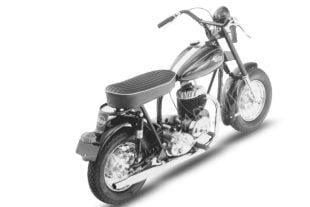 From 1956 equine names replaced the old model designations. First off was the Colt introduced in 1956, in effect an economy detuned model Model 4 with centrifugal clutch in place of the Burman gearbox. A restricted 5hp model option was offered at youngsters with the advertising slogan: ‘Hit the trail… to school, route or just good fun’. By 1959 the Model 4 had become the Pony, the Model 4 Special the Stallion and the new mid-range model the Bronco, all with Bumble Bee power. Then in 1960 Chuck Gardner came up with a soft tail version with full swinging arm suspension named the Thoroughbred, possibly based on ideas from Walt Fulton’s racing programme.
From 1956 equine names replaced the old model designations. First off was the Colt introduced in 1956, in effect an economy detuned model Model 4 with centrifugal clutch in place of the Burman gearbox. A restricted 5hp model option was offered at youngsters with the advertising slogan: ‘Hit the trail… to school, route or just good fun’. By 1959 the Model 4 had become the Pony, the Model 4 Special the Stallion and the new mid-range model the Bronco, all with Bumble Bee power. Then in 1960 Chuck Gardner came up with a soft tail version with full swinging arm suspension named the Thoroughbred, possibly based on ideas from Walt Fulton’s racing programme.
Sadly the once-successful Mustang was to die in the mid-Sixties due to the import of cheaper, sophisticated, reliable, Japanese machines led by Honda, management unwillingness to allow Howard Forrest to follow his design imagination, poor company board decisions and the loss of supply of the robust Burman gearbox. In 1962 shareholders voted Ralph Coson general manager, an unpopular move for many key workers including Chuck Gardner and company founder John Gladden, who resigned. Before he left Gardner had designed some – most un-Mustang-like – trail models with Briggs and Stratton engines which Coson pushed into production. A Mustang without a Bumble Bee was unthinkable and most Americans hated it. Production ended in 1965, although the company continued to stock and supply parts until 1971, when manufacturing rights and many parts were bought by Los Angeles custom bike builder Don Orr, who built a small number of Don Orr Stallions before falling foul of modern US lighting legislation.
A year later Circle Industries, El Monte, California bought the manufacturing rights and parts. Unfortunately, plans to restart production went awry and the stock was acquired at auction by former Mustang dealer Roy Stone, of Waco, Texas, who continued to have parts made including frames by fellow-Texan Alan Wenzel into the Nineties. Rather as with BSA and Triumph here in the UK, specialist parts suppliers continue to make and supply spares to keep those Mustangs roaming.
Footnote: Rather as in the UK where Triumphs, BSAs, Nortons et al attracted the attention of specials builders and factory/privateer racing programmes, so to did Mustang. A surprising variety of engines have been shoe-horned into modified Mustang chassis including BSA Gold Star, Norton and AJS/Matchless. Not surprisingly the best specials were built by company designers Howard Forrest (ohc Ariel Square Four/Mustang) and Chuck Gardner (350cc BSA Gold Star/Mustang) for their favourite ride-to-work motorcycles.
A combination of small wheels and low centre of gravity made the Mustang successful in class C dirt-track racing, much to the annoyance of Harley-Davidson, Indian and Triumph. This success was later their undoing. The big time began in September 1950 when salesman Walt Fulton rode a lightly-modified Model 4 Special to victory in a 225-mile endurance race at Tulsa, Oklahoma, with Indian and Harley-Davidson V-twins coming second and third – a particularly humiliating experience for the Milwaukee team as their Midwest Harley-Davidson Dealers’ Association had sponsored the event.
More places and victories followed, including second for fellow-Mustang teamster Tommy Bizzari in the 1951 Catalina GP and a cheeky victory at Harley’s home track at Milwaukee when H-D works rider Carroll Resweber retired with rider fatigue, handing victory to an elated Walt Fulton. Using the Rosamund dry lake, California, Howard Forrest – later joined by Fulton – went on a number of US record-breaking sprees culminating in 1953 with an average four-run speed of 100mph.
At the 1953 Catalina GP, Walt Fulton completed just four laps, enough to humiliate most of the field as he had already passed over 70 riders. Wanting no more embarrassment, the big boys lobbied the American Motorcyclist Association (AMA), who responded by limiting minimum wheel size to 16in, claiming anything smaller too dangerous. Effectively the Mustang was barred from the racetrack.


